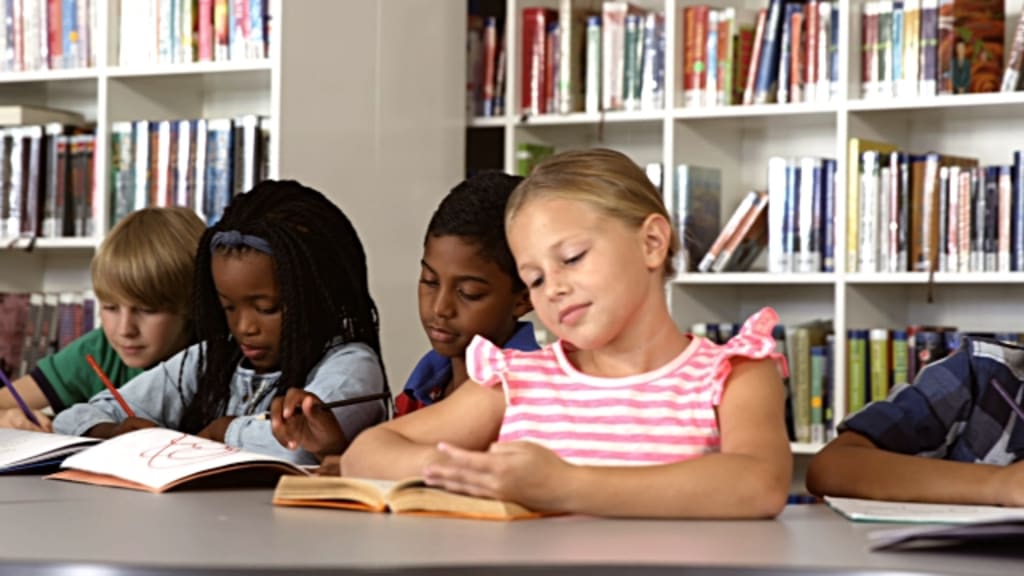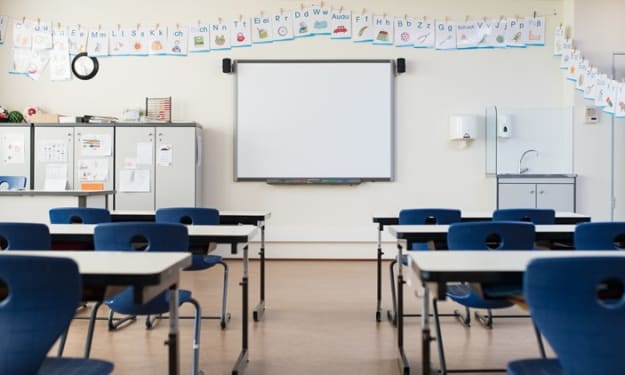Self-Esteem Activities for Children
A Guide to Helping Kids Learn to Love Themselves

The children of today are growing up in a world over-saturated with impossible beauty standards seen everywhere from photo-shopped celebrity images on social media to beauty and fitness ads on television. Kids, especially young girls, are being exposed to these fake images and are learning from younger and younger ages that they need to look a certain way, a way which might not even be possible for them. While some companies such as Aerie and American Eagle are embracing the "un-retouched" ad, there is still a long way to go before body positivity messages can become mainstream. In the meantime, there are things you can do with your kids, either in a classroom setting or at home, to help combat this cultural phenomenon and teach your children that they are worthy of respect.
1. Practice Self Affirmations
This is an excellent exercise for very young children to help them gain rhetoric around self-love and acceptance. The messages can be tailored to their personal differences or the differences seen in the classroom to promote empathy and social-emotional growth.
Materials:
- None
Activity:
Come up with a list of positive affirmations that include a variety of phrases. Some examples include: I feel good about who I am today; I approach challenges with strength; I forgive myself for my shortcomings and mistakes that I make; I do the best that I can at the time; I do not have to be perfect to be okay as a person; I enjoy being who I am and love myself as I am. These can be repeated as a part of a game or a type of sing-a-long time or just incorporated throughout the year as reoccurring phrases.
2. Self-Esteem Soup
This activity is great because it is hands-on and engaging. It can be tailored to various age groups and settings through the props but the concrete image of soup with different ingredients is great for a variety of populations. This activity can also be paired with reading books in class such as Stone Soup.
Materials:
- Poster paper with a drawing of a pot, or you can draw it on the whiteboard.
- Cutouts of veggies such as beans, carrots, potatoes, etc.
- Pens or pencils.
Activity:
Pass out the paper veggie cutouts to each student. Have the students think about all the 'ingredients' that make up being a good friend to themselves or loving themselves. Have them all write one of these ingredients on their veggie and stick all the veggies to the soup pot drawing. Read them all out loud and make a class recipe for self-esteem. For example, 2 cups love; a dash of loyalty; 3 tablespoons respect; a pinch of taking breaks; etc.
3. Small Group Discussions
For some kids being kind or accepting themselves is a foreign topic. By pairing up students in small groups they can bounce ideas off of each other and gain some perspective from others. This is also a great way to introduce the idea of respectful discussions and reinforce peer cooperation in the classroom.
Materials:
- A list of questions.
Activity:
Have students break up into small groups and discuss the idea of self-esteem. If you want to give them a frame of reference you can have them discuss what it means to be a good friend and then have them relate that topic to being a good friend to themselves. Many children will understand the concept of friendship more readily than self-esteem but tying the two together can help them form a healthy relationship with themselves and give the abstract concept a more grounded feel.
4. Guided Meditation
Guided meditations are a great classroom tool as they can be tailored to introduce any topic or just used as a calming tool when transitioning from different types of activities. The versatility and customization make them a great tool for discussing self-esteem.
Materials:
- Short self-esteem meditation.
Activity:
Have students get into a comfortable position, invite them to close their eyes and think about their breathing. For some beginner breathing exercises see this article on coping skills. Try to incorporate some affirmations and positive self-talk into the meditation so that your students can try out some positive phrases with you as the narrator in their heads. Even incorporating this activity once and a while can make a big impact and prime students to think more positively about themselves.
Hopefully, these activities will inspire you to bring self-esteem into the classroom and into your students' day. Being creative and adapting the lessons to your students' abilities, differences, and strengths will help them make the most out of these activities. With your help, the kids that you care about can be put on a path of confidence and self-acceptance.
Like what you just read? Please consider leaving me a tip in order to continue sharing my classroom experience with you.
About the Creator
Alina Gallupe
I am a graduate student of Mental Health Counseling in Cambridge, MA. I strive to combine my mental health knowledge and my love of writing to explore all topics related to the human experience. I am also a dedicated cat mom and home cook.






Comments
There are no comments for this story
Be the first to respond and start the conversation.